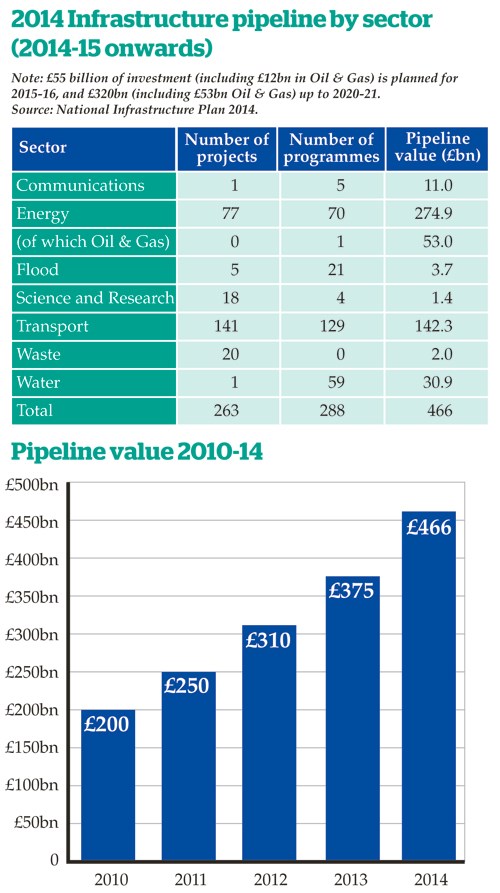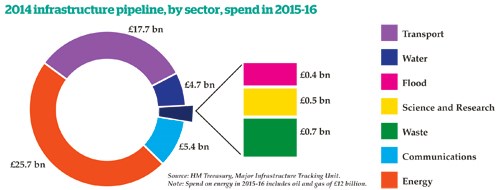Much more challenging from a planning point of view are the trade-offs between infrastructure and areas such as health and education. We know that air pollution contributes to around 30,000 deaths a year, with an estimated cost to Britain of £20bn. We know that diesel engines emit four times the nitrogen dioxide and 22 times the number of particulates as petrol equivalents. We know that children who have walked or cycled to school perform better than those who didn’t, and that childhood levels of obesity are a time bomb for the NHS.
Attempts to assess the cost benefits behind reducing the burden on the NHS - as a result of having a healthier, less obese population have been made by The Transport Appraisal and Strategic Modelling Division of the DfT. Maddison, Pearce et al in The True Costs of Road Pollution put the cost of air pollution from road transport at £19.7 billion. Yet we make only hesitant steps to effect significant change.
Modal change was cited in the first NIP as an object of a high-speed network, which “would make rail increasingly the mode of choice for inter-city journeys” and encourage “a large proportion of domestic airline travel on these routes to the train”.
No corresponding target has ever been set for urban journeys. In the case of London, abolition of the Western Extension charging zone in 2010 by Mayor Boris Johnson turned the clock back, and contributed to the city breaching EU pollution limits on 36 occasions by April 20 the following year.
Air quality plans
Five years later and on April 29 2015 the Supreme Court ruled that the Government had failed “to secure compliance in certain zones with the limits for nitrogen dioxide levels set by European Union law”, and ordered the Government to submit new air quality plans to the European Commission no later than December 31 2015. This relates to 38 out of 43 air-quality monitoring zones across Britain where limits are breached. Analysis by King’s College London ranks Oxford Street as one of the most heavily polluted streets on Earth for nitrogen dioxide.
Moreover, in May 2015 the Airports Commission unexpectedly re-opened its public consultation on expanding airport capacity in the South East, to focus on air quality. There is little doubt that air quality will play a greater part in prioritising transport investment - the difficulty comes in factoring it into the Government’s commitment to prioritise “capital spending on transport projects which can offer high economic returns when compared to investment projects in other sectors”.
The recent NPS acknowledges that rail freight produces 70% less CO2 than road freight, up to 15 times lower nitrous oxide emissions, and almost 90% lower PM10 emissions, while each freight train (depending on its load) can remove between 43 and 77 HGVs from the road. Yet no action is taken to complement the NIP projects by addressing the subsidies that are effectively given to road freight through paying for less than half the costs it imposes (RailReview Q4-2014). The Government has shied away from the lorry road user charging schemes operated in Germany, Switzerland and other European countries.
However, the large amount of space in the NPS devoted to the benefits of and “compelling need” for a network of strategic rail freight interchanges (SRFIs) suggests that they might make an appearance in future NIP pipelines.
Currently the third phase of Daventry International Rail Freight Terminal is the only terminal scheme. A higher priority for SRFIs would reflect the predicted changes in rail freight, which has experienced a slow decline in solid fuels over the 2011-13 time frame, but a 12% compound annual growth in domestic intermodal traffic and 5% intermodal traffic with ports.
The latest NIP purports to address the need for a long-term plan, and to counter previous “fragmented and reactive” developments. The first report stated that projects would be “part of a clear, long-term strategy”.
The performance measurements since 2013 did introduce categories that would be part of an overarching policy, but what the NIP does not provide (and arguably it is outside its remit) is a clear sense of direction that would allow it to escape accusations of continuing “fragmented and reactive” developments.
The exceptional lead times for the largest projects makes it very hard to anticipate what the world of transport will look like when they open - HS2 in 2026 and 2033, for example.
And the anticipated reduction in the demand for travel as a result of developments in IT, teleconferencing and email never occurred - quite the contrary, in fact. In much the same way as climate change is accelerating the urgency of civil engineering works to maintain resilience, so technical progress is condensing societal changes into much shorter time frames.
When the 2009 Council for Science and Technology report on A National Infrastructure for the 21st Century called for a vision that looked forward to 2050, it was blissfully unaware of the impact that some “disruptive technologies” would have on transport in just six years. In Britain, Uber may be upsetting black-cab drivers more than urban rail balance sheets, but in France, car sharing through BlaBlaCar is eroding SNCF’s long-distance traffic. This highlights the difficulty of forecasting transport developments and requirements ten years hence, let alone 35.
The only part of the UK planning strategically across all infrastructure to 2050 is London. Already the third most densely populated European country, and with recurrent annual net immigration totals of over 300,000, the UK needs to be able to identify where the extra five and a half to six million extra households (by 2031) are going to go, and what must be provided to make that possible. The Armitt Review of 2013 voiced a similar concern - “that successive governments have failed to set strategic priorities for infrastructure based on clear projections of future needs”.
Devolution of powers may make it more difficult to obtain the nationwide support that major projects require. In a devolution of powers to a Northern Powerhouse, would its urban areas grow evenly, or would some flourish at the expense of others? Following the first post-election speech given by Chancellor of the Exchequer George Osborne on building the Northern Powerhouse, there was some resentment that Manchester was perceived as top dog.
As Tom Worsley, Visiting Fellow in Transport Policy at Leeds University, points out, we lack understanding of the economics of place, to help us anticipate where the spatial distribution of economic activity is going to be. Land-use planning is a primary driver of transport demand, so should we be putting in place policies to influence it?
There are innumerable instances of poor co-ordination to achieve desirable outcomes - car factories and monumental distribution centres built without rail connection, or the underestimation of long-term transport needs for the Docklands, which entailed rebuilding the Docklands Light Railway at higher cost than the original construction.
Devolved decision-making also increases the difficulty of balancing local and national interests. It would be hard to defend the decision to build the Cambridge Guided Busway instead of re-opening the St Ives branch, which could have provided a strategic route for trains to Stansted off the East Coast Main Line at Huntingdon. The £180m cost of construction (originally £64m), coupled with the £30m-200m reconstruction estimates of the currently closed busway, makes the rail option look a badly missed opportunity.
One can only applaud the Government’s levels of investment in the railway, albeit to make good decades of underinvestment that resulted in (for example) the proportion of electrified lines in Britain falling substantially below most other European countries. In the latest NIP, transport projects account for £142.3bn out of £466bn, exceeded only by energy (£274.9bn).
Electricity consumption
It’s energy supply that worries Len Porter. Transport is the largest single consumer of electricity and currently that is almost entirely used by Network Rail. At the very time that we have the largest electrification programme for decades (if not ever), there is the simultaneous prospect of the electric road vehicle becoming a significant user.
Since the Government relies on the private sector to provide energy, it generally keeps out of the planning of capacity. The independent regulator sets certain requirements as a condition of approving the prices charged to consumers, such as reliability of supplies, and leaves it to the generators to decide how to meet these requirements.
The success of the NIP will take decades to evaluate. If an overriding objective of transport policy is (as the NIP states) “to promote lower-carbon transport choices”, then that will be a fundamental measure. As will its impact on Britain’s low level of productivity, which the Policy Exchange report Delivering a 21st Century Infrastructure for Britain partly ascribes to weak infrastructure.
The National Policy Statement for National Networks forecast that by 2030 road traffic would increase by 30%, rail journeys by 40%, and rail freight by 100%.
One challenge that is never likely to disappear is how to resolve the currently irreconcilable objectives of improved services with a lower carbon footprint.













